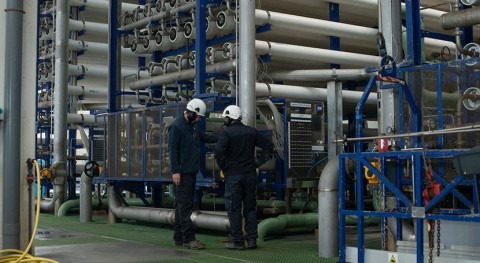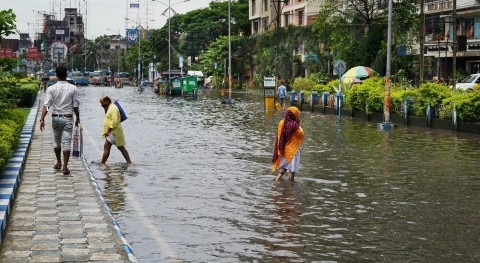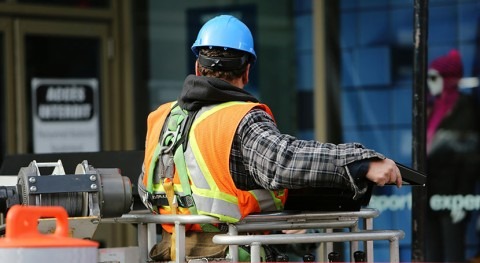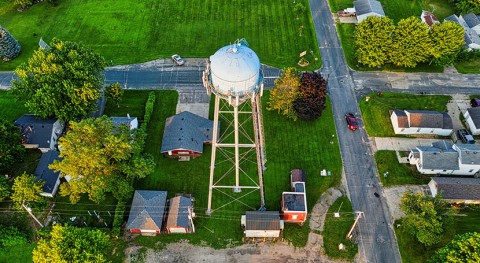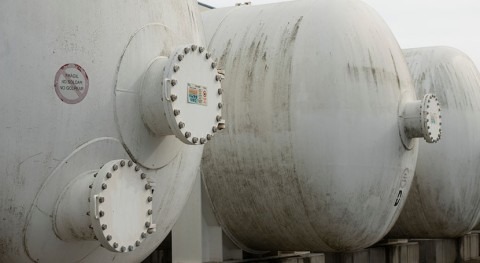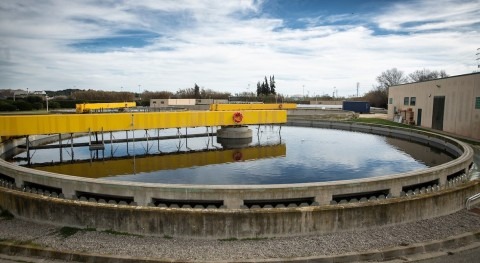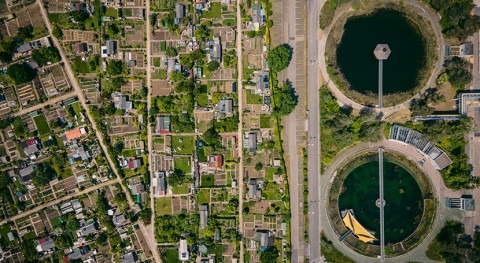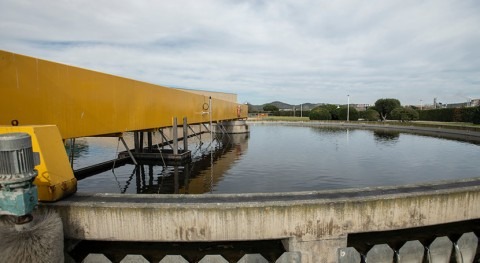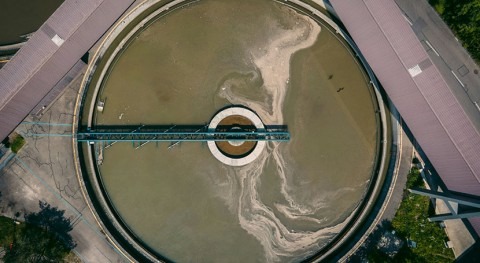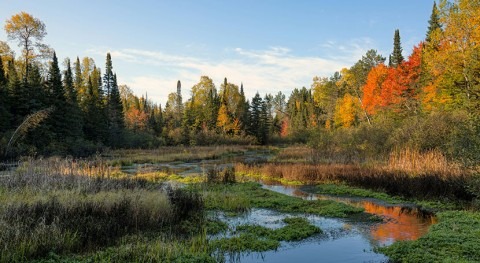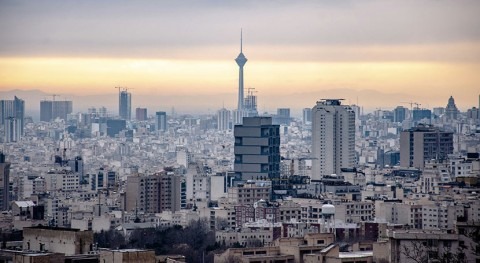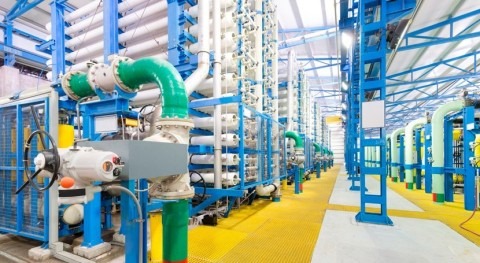A recent study led by The World Bank’s Water Global Practice titled: “Women in Water Utilities, Breaking Barriers”, highlights that in the water sector, less than one in five workers are women.
To celebrate this year’s Women’s Day, internationally celebrated on March 8 every year, we reached out to numerous women working in the global water industry to discover their opinions on why women are still underrepresented in technical and managerial positions in this sector.
Bianca Nijhof, Managing Director, Netherlands Water Partnership

A significant underrepresentation of women in the water sector I believe is probably due to the fact that many people still believe the water sector is a very technical sector. We are looking for engineering solutions to for example prevent flooding or water technology solutions related to water purification and circular water use. This all sounds very technical, whereas in all of the cases there very much is a societal aspect related to this as well, which maybe only in the last few years starts becoming visible for many more people. Maybe due to the fact that slowly we see water is not always and everywhere a given anymore. Social awareness with regard to water is growing.
Now having written that, this directly links to the fact that we perceive certain professions very much linked to male and others to female characteristics. This very generic way of looking at it does not help individuals as well as society. It does not do justice to the individuals we are and the power of diverse teams in every way.
I believe we need to strive for more women in water, which will give us an even greater variety of ideas and possible solutions. There are different ways to start this, one is already when girls pick what they want to be and where it is helpful to have role models showing that working in water is something for women as well. The other one is to show that these so-called softer characteristics, perceived to be feminine, are very valuable for the water sector. At the Netherlands Water Partnership, the organization I have the privilege to lead, we run a Young Experts Program in which we educate young water leaders. With 54% male and 46% female participants we hope to contribute to more women in the water sector.
A more divers water sector will bring us even better and more innovative and sustainable solutions. Happy to contribute to that!
Mirka Wilderer, CEO, De Nora Water Technologies
.jpg)
Standing up for a higher degree of diversity and inclusion in the water space is a true passion topic for me – not only because I am the only female CEO of a “major water technology company” as recently highlighted by GWI. But also, because my husband published the best-selling book “Lean On. The 5 Pillars of Support for Women in Leadership” in October 2019. In his book he discusses the question: “When more and more women are leaning in and become successful leaders at work, who can they lean on?” It tells his story and the story of many other husbands and male spouses navigating this new normal. Our goal and purpose is to fight for gender equality.
Clearly, diversity and inclusion need to be understood beyond gender. In a world of ever-increasing volatility, uncertainty, complexity and ambiguity (VUCA), I believe it is critical to tap into the individual strengths and talents of all employees regardless of her gender, ethnic background, age, religious beliefs or personal preferences. In fact, only when including the experience and expertise from very different backgrounds and walks of life in the dialogue will we identify the most effective options and make the best possible decisions in face of the business challenges and opportunities of our time.
Unfortunately, the water industry is known to be very conservative and slow to advance. Innovation cycles are much longer compared to other industries. While the world is witnessing global disruptions based on the capabilities of digital technologies, we are only starting to discuss their application in our space. Other business practices of modern-day companies are equally slow to adopt. Also, with regards to driving diversity and inclusion the water industry represents the taillight of adoption.
As a result, there is a clear lack of role models and examples: both for women in prominent positions setting an example for the decision makers to gain confidence as well as the next generation of female talent. But equally, there is a lack of male role models courageous enough to support female representation: whether it is as mentors, sponsors, hiring managers or decision makers. Especially in light of the current retirement wave and brain drain as well as the global competition for talent, it will take a leap of faith of key decision makers to allow female candidates to be considered.
In addition, it is surprising that unlike other industries we do not (yet) have a “women in water” organization for peer-to-peer support and engagement. The few women in the space all share the same experience – having a network or forum for regular exchange, mutual support, and reassurance can provide the critical support system to weather difficult situations and “stand your man”. This would also provide a platform for mentorship of the next generation to attract and groom more female talent into the space. We will have to champion a global platform of this nature together with a few visionary men to catch up with the more advanced industries and make a difference for one of the most precious resources: water
As first female CEO at De Nora Water Technologies, my goal is to set an example for the water space. Leveraging the programs and ideas proven in other industries, we are working to launch a state-of-the-art DEI approach and lead the way in attracting women and other diverse groups into the water space while providing them a platform within our company for mutual support and peer-to-peer experience sharing.
Elena Reyna, Marketing & Communication Director, ACCIONA
(1).jpg)
I think in general the water sector is very technical and in many cases water fits in infrastructure areas, where positions require degrees like civil or industrial engineering, where men predominate. However, we will not achieve a gender balance from one day to the next, and I have observed that, from the time I started working in this sector, the trend is improving. What we have to achieve now is the same visibility men have; there are excellent women professionals who have to surface and be more visible.
Ursula Boehm, Managing Partner and President, Liinc

It is hard not to notice the lack of diversity when you walk into water meetings, conferences and shows, or business meetings – not just the underrepresentation of women, but also the lack of diversity in race, age as well as other factors.
While this is not per se a Water Sector phenomenon - I’ve worked in other, adjacent industries and have seen similar patterns - I believe the reasons and opportunities in the water sector are significantly different.
The reasons span education & technical backgrounds, attracting individuals into the water industry, retaining them and providing opportunities to advance their career:
Specifically, in the Water Sector, it is often required to have specific technical backgrounds such as civil engineering or environmental sciences which have per se a lower share of women graduating than men. But there are also many examples of careers and executives in the Water Industry who do not have a traditional water background. Take for example Brenda Burman, Commissioner at the US Bureau of Reclamation (Law), Rachel Fletcher, CEO of OFWAT (Economics and Politics), Mirka Wilderer, CEO of DeNora Water Technologies (Socio-Economics), Debra Coy, Board Member at AquaVentures (Journalism) – do I need to go on? I believe that because Water is such a complex and broad field that there are many opportunities regardless of academic background. Our Industry needs diversity in thinking and approaches.
In terms of attracting talent, the water industry is hit especially hard with an aging workforce, more so than other industries. And while some areas Water (or wastewater) may still carry some stigma, the overall appeal of making the world a more sustainable and liveable place and the need for talent makes great career opportunity, especially for women. We need to keep highlighting that.
In terms of retention and career progression, we need to acknowledge that the Water industry is very slow moving. Not just in terms of regulations or acceptance of new technologies, but it also manifests itself in slower than usual career progression than in other industries. Which in turn means that maybe (senior) female role models not visible as they are in other, faster moving industries, where gender diversity is quicker catching up. This may lead to some disenfranchisement and discouragement. It is therefore in my opinion very important to highlight inspiring female leaders on all levels and in a variety of positions in the Industry and to facilitate a dialogue and network of growth and development – especially for women. And when there is personal growth and meaning, I believe employees will be retained and make more meaningful contributions.
Lastly, let’s not forget that it is not only about Women. Work and Leadership quality doesn’t depend on gender, ethnicity or sexuality. But a more well-balanced and diverse Workforce and Management will further strengthen the water industry. Addressing the factors above will help strengthen all type of diversity across the water sector. That’s what I think we all need to aspire to.
Carmen de Miguel, Water & Waste Water Offer Manager, Schneider Electric
.jpg)
The percentage of women in the water sector is even lower than their presence in STEM-related disciplines, which is 35% (UNESCO, 2017). In the first place, why are technical careers less attractive to women? I ran a quick survey within my eighteen-year-old son’s circle of friends, a few of which are female students in technical disciplines. Their replies are surprisingly very similar to what I would have said when I was starting my engineering studies - thirty years ago: traditional roles and stereotypes of men and women, lack of female models to look up to, lack of ambition… sadly the same story goes on.
Secondly, why is the story in the water sector worse? To me it is a combination of lack of career prospects and lack of attractiveness. We could do more to attract young female talent to our industry, but as we move up in the organization of water companies, women’s presence in technical and managerial positions is as scarce as water in the dessert. My recipe to change that situation starts with women being convinced of our professional capabilities and value, followed by a true equality in family obligations between men and women.”
Gillan Taddune, CEO, Banyan Water

The water industry has been misrepresented in a number of ways, not only impacting the resource itself, but impeding the rise of female representation within the water sector. Addressing water scarcity has historically been off the clean-tech industry's radar, creating a lack of innovation and general market demand for new technology to address water-related concerns. Now, after decades of gross undervaluation, water rates are slowly rising, creating new market demand for water-related technology. Due to the technical nature of the burgeoning industry—and a systematic underrepresentation of women in technology—an imbalance has unfortunately formed between males and females in water-related roles.
However, water scarcity is one of the world's foremost environmental concerns, which oddly gives me hope that new companies—and therefore new jobs—will surface to combat water threats. With an upswing of jobs comes new opportunities to attract women in a variety of roles, both technical and otherwise.
Ms Asli Duale, Chair of Somali Country Water Partnership, Member of EAGWP, East Africa; Global Water Partnership, and member of the Global Water Partnership

There are a number of reasons as to why women are underrepresented in the technical and managerial roles. One of them could be that women are initially underrepresented in engineering, geology, etc. courses at the university entry degrees, thus such underrepresentation trickles down into the job markets. Additionally, there are a number of other factors contributing, including gender parity policy barriers in societies, lack of policy commitments by the leadership of companies and governmental institutions, or simple cultural factors, cultural factors which bleeds into other two.
Lincy Paravanethu, Co-Founder Women in Water & Sanitation Network
.jpg)
The water and sanitation sector is still considered to be male dominated due to: 1) the immense importance of technical on-ground / site requirements (wherein “technical” is seen as male dominant occupation), and 2) the socio-cultural and geographic locations of the development projects.
These two points lead to disadvantages for women, since they do not get the chances to broaden their horizon as well as gather enough experience that could advance their careers in the long run. Especially at mid-career level, women are faced with the situation to juggle personal and professional life. Often, women are asked to step back from their careers, other times societal acceptance and psychological conditioning indirectly forces them to slow down their career.
This directly leads to less women in decision making positions who can be mentors and guides to new female recruits or women in their mid-careers. Therefore I believe that mentorship programmes are necessary to change the status quo, since women will be able to lead by example.
Erin Bonney Casey, Research Director, Bluefield Research

The water sector as a whole has been resistant to change. In some ways, this makes sense - an industry charged with preserving public health should be conservative. However, this conservatism has meant that the water industry as a whole still relies on a business as usual approach - from its selection of treatment technologies, to a hesitation to adopt innovative utility business models, to willingness to embrace digital solutions, to workforce development, including diversity issues. The water industry continues to recruit from male-heavy engineering and science fields even as the emerging issues in the field will require an inter-disciplinary approach. In addition, the field tends to recruit upper management from within, perpetuating the historical gender-imbalance within the water workforce at the highest levels. As we look to tackle increasingly complex emergent issues in water and wastewater management, a diversity of perspectives in the water sector workforce can only be an asset.
Ingrid Timboe, Policy Director, Alliance for Global Water Adaptation (AGWA)

If viewed from a fundamentally Western perspective, the scarcity of women in the water sector primarily relates to the continued underrepresentation of women in science and engineering as well as persistent gender discrimination in hiring, retaining and advancing women in the workforce more broadly. But perhaps this is a rather narrow conception of the sector. If we expand the definition of "water sector" to include water teachers, knowledge holders, activists, and those who work with water on a daily basis – in particular securing it for their families and communities – the world is full of working water women. In traditional societies around the world women are water leaders, tasked with safeguarding and distributing water for themselves and their communities. Their knowledge about local water supplies, rainfall patterns and related eco-hydrological systems is critical to the continued sustainable use of water and I believe should be embraced and accounted for any time we discuss women in the water sector. It is on all of us to ensure that these types of knowledge are valued on par with topics such as fluid mechanics or physical model calibration.
Yumiko Yasuda, Senior Network Officer, Global Water Partnership

I understand that the World Bank report that surveyed the workforce in water utilities indicated women being 20% of the workforce. If you look at the overall numbers of women working in the water sector, this may be a relevant figure and also reflects my general observation. However, we also need to recognize the diversity of women represented in the water sector playing different roles.
In the field of transboundary water management that I work in, I see some differences. For instance, a regional dialogue that GWP just conducted on transboundary issues in Central America was represented by an equal number of men and women who represented ministries and other sectors. In water governance training course, we conduct annually in Africa where a majority of participants are transboundary water practitioners from government, river basin organizations, and regional economic commissions, the majority of applicants are male while female applicants are approximately 20% (depending on the year). Transboundary units of some of the global knowledge partners we work with such as SIWI, IHE-Delft, Geneva Water Hub, and UNECE – the majority of staff are women.
This may be a reflection of the required disciplines of work where more males tend to choose the study of water engineering over females, pursuing a career in government or the utility sector. In the field of water diplomacy where political science, legal, and other social science skills are required, the field may be more attractive to females. Having female leaders in negotiation and mediation could potentially facilitate the softening of the negotiation environment, as women are often perceived to be more open and accepting of diverse opinions.
Marianne Kjellén, Senior Water Advisor, UNDP

Women are grossly underrepresented as professionals in the water sector, and especially so at the managerial level. This can be explained by the heavy engineering focus of the water sector. The overreliance on engineering in the water sector is an issue in itself; with investment often skewed towards water abstraction, treatment and transmission (following the first chapters of a standard water supply engineering textbook), to the detriment of the onward distribution to households and the management of the ‘soft’ parts of the system. The inadequate attention paid to the user interface, including the intelligent pricing of water, services and connections, can be partly attributed to an overreliance on male engineers.
At a broader level, the male dominance and the focus on large-scale engineering is explained by what makes you feel proud of yourself and what gives you status in the eyes of others. This includes the ambiguous social rewards for women going into engineering or leadership roles. The water sector is just another manifestation of traditional roles of women and men in our societies. In order to break these chains, we need women and men to cross social boundaries. Such braveries, in turn, need to be supported by education and enlightenment to ensure we all measure performance and status in ways that do not discriminate against any person. All of us should have equal chances to develop to our full potential.
For the water sector to develop and stand up to today’s challenges, it must – for its own sake – break with inhibiting gender stereotypes and bring in greater diversity. This is not only to acquire much-needed additional perspectives and skills, but also to break up homogenous groups which in themselves may be breeding grounds for prejudice and hidden agendas.
It should also be recognized that women are only underrepresented as professionals in the water sector. It is well-recognized that women cater for the brunt of unpaid domestic labor, including household-level water management. Yet, the same type of labor, when paid, is typically carried out by men. Water vendors are almost invariably male. As put by an older man interviewed in my research in Dar es Salaam, Tanzania: “If you see a man carrying water you know it’s for sale.”
Ways to transcend unequal gender relations at the village level may include professionalizing water management. With the appropriate training, community ‘free’ labor contributions to projects can be turned into community contracting of skilled (women!) labor. Payment is an underrated way to give recognition to somebody’s work. Professionalization holds a promise towards revolutionizing the broader water sector which is characterized by self-supply. This way, water provisioning at the community level may contribute both practically and strategically towards women’s empowerment.
Kanika Groeneweg-Thakar, Gender Equality Focal Point, SIWI

As a sector we are valuing the skills that traditionally men have brought to the workplace, higher than we are valuing those of women. Women are excellent negotiators, managers, stewards, planners, community mobilizers, and so much more, but their approaches to these areas can be very different than those of men. As a sector, we need to recalibrate our expectations and appreciate the diversity of skill that women can bring to a situation. Different approaches mean different outcomes, and new outcomes can bring new opportunities for success.
By broadening our view of what are desirable traits in professionals, we create more opportunities for women to enter and succeed in the job market. And by putting greater effort into getting more women into positions at the highest levels we can begin to make way for women at all levels by creating workplaces that allow women to thrive.
Nicole Samples, Water & Wastewater Segment Marketing and Communications Manager, Schneider Electric
(1).jpg)
I see the issue starting as early as elementary/primary school. The gender-biased that is placed on girls vs boys regarding what subjects or interests they should be involved in still exists. I’m not an engineer, but I do have kids in grade school where students are now highly engaged in STEM programs, robotics teams and even Lego competitions. Another step in the right direction is to expose young girls to female engineers. The path to success can be impossible to see when the road has not yet been paved by someone else.
Additionally, women recognize the large gender gap in the water industry and experience challenges when they want to continue to climb in their career. However, I recently sat in on a discussion at my company [Schneider Electric] around the gap of women in leadership positions. The advice I took away was to not to listen to the judgements or opinions of those with limited viewpoints. Set your goals high, find your female AND male advocates because you will need them both. Challenge the status quo.
There will be bumps along the way and you will need to face them head on. And then, keep going.
Ruth Mathews, Senior Manager, SIWI

Too often during my career in water resources, I have been the only or one of the few women in the meeting, on the panel or authoring the article. Men have dominated the water resources field in large part due to the heavy focus on the development of infrastructure such as dams or flood control structures in the years since World War II. This has meant that the educational background for entering the field of water resources has been engineering, hydrology, hydraulics – fields that women have been discouraged from entering through many means. But the field of water resources is much broader than infrastructure development and the education of water resources professionals must go far beyond these traditional fields. Many of the problems we are facing now – water scarcity, water quality degradation, loss of wetlands and freshwater biodiversity – are a consequence, in part, of this narrow approach to water resources management.
When I was first considering entering the water resources field, I had a chance meeting with someone who emphatically encouraged me to do so saying that it would be a dynamic and growing topic for the next twenty years. The prediction was true and continues to be so looking far into the future. More than ever before we need to bring a holistic approach to managing water resources, recognizing the linkages between terrestrial, freshwater and marine ecosystems as well as the interdependencies between environmental, social and economic health. To do this, we need a greater diversity of voices, educational backgrounds, perspectives to be with me in the meetings, on the panels and writing the articles. We need to hear more from girls and women, who are affected differently than men by decisions about how to manage water resources. We need to encourage, support and mentor girls and women of all ages and backgrounds to enter the discussion with us and to share in the next chapter of the story of how we can live in harmony and balance with all life that depends on freshwater, to share it equitably amongst all people and to use it wisely to support thriving economies. We are the authors of this story and I hope the voice of girls and women grows stronger as we write this next chapter. Please join me, the world depends on it.





